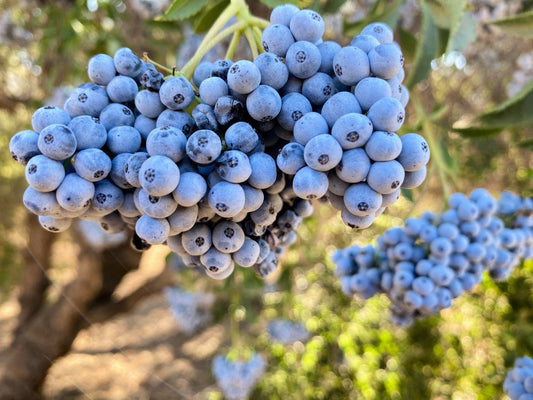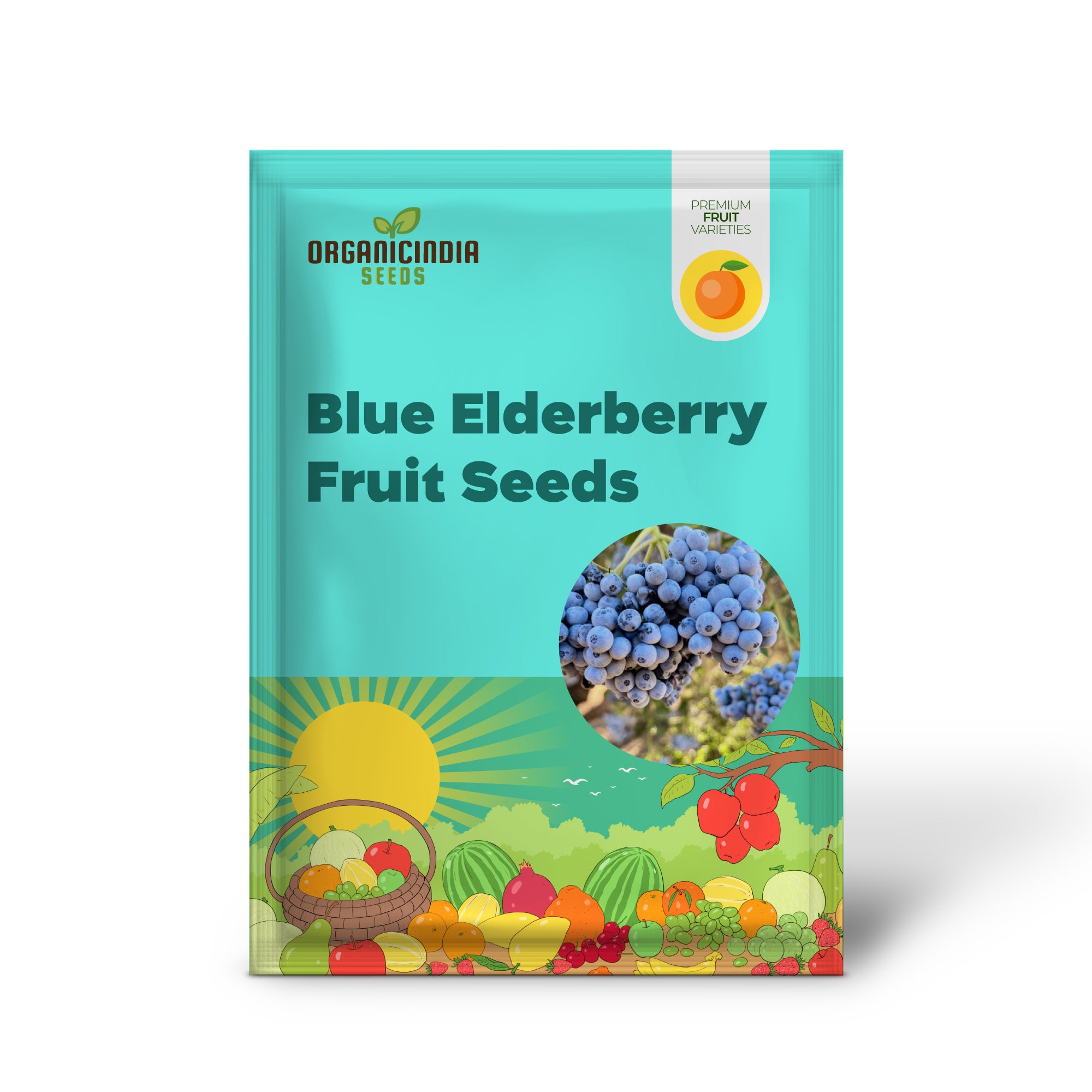



Free Shipping
Safe & Secure Payments
Product Title:
50 Blue Elderberry (Sambucus cerulea) – Arizona Blue Elder Tree Shrub – Fruit Berry Seeds
Product Overview:
The Blue Elderberry (Sambucus cerulea) is a deciduous shrub or small tree native to the southwestern United States, particularly Arizona and other arid regions. Known for its striking blue-black berries and beautiful clusters of white to cream-colored flowers, this plant is not only a valuable addition to any garden but also offers a multitude of uses. The berries are rich in vitamins and antioxidants, often used to make syrups, jams, jellies, wine, and medicinal tinctures. With its attractive foliage, stunning blooms, and edible fruit, the Blue Elderberry is perfect for gardeners looking to combine beauty with functionality.
This pack contains 50 high-quality seeds, allowing you to cultivate your own Blue Elderberry shrub or tree and enjoy its many culinary and ornamental benefits.
Key Features:
Growing Information:
Light:
Blue Elderberries thrive in full sun to partial shade. In hot, dry climates, the plant will benefit from some afternoon shade to protect it from excessive heat, but it can tolerate full sun when grown in cooler areas.
Soil:
This plant is very adaptable and will grow in a variety of soil types. However, it prefers well-drained, slightly acidic to neutral soil. While it can tolerate poor soils, it will grow best in fertile, moist soil with good drainage. It is particularly well-suited to arid and semi-arid conditions, so it's an excellent choice for xeriscaping or dry gardens.
Planting Tips:
Start seeds indoors 6-8 weeks before the last expected frost. Soak the seeds in warm water for 24-48 hours before planting to improve germination rates. Plant the seeds about 1/4 inch deep in seed-starting mix. Keep the seeds in a warm, bright spot, and maintain consistent moisture in the soil. Germination can take up to 3 weeks. Once seedlings are large enough to handle, transplant them outdoors after the danger of frost has passed. Space the plants 3-6 feet apart to allow for adequate air circulation and room for growth.
Watering:
Blue Elderberries are drought-tolerant once established, but they perform best with regular watering, particularly during dry spells. Keep the soil moist, but ensure it drains well to avoid waterlogging, which can lead to root rot. Water deeply but infrequently, allowing the top layer of soil to dry out between waterings.
Temperature:
Blue Elderberries are hardy in USDA Zones 4-8. They are well-suited for hot, dry climates and tolerate freezing winter temperatures. If growing in colder regions, provide some protection in the first winter after planting to help the plant establish. They do best in regions with moderate to low rainfall.
Benefits:
Growing Zones:
The Blue Elderberry is hardy in USDA Zones 4-8. It thrives in areas with dry to moderate rainfall and can tolerate a range of temperatures, making it ideal for gardens in both cold and hot climates.
How to Use in the Garden:
Conclusion:
The Blue Elderberry (Sambucus cerulea) is a versatile and low-maintenance plant that offers both beauty and functionality in the garden. With its edible berries, attractive flowers, and drought tolerance, it is perfect for a variety of garden settings, from wildlife habitats to edible landscapes. Growing this shrub or small tree from seed provides an opportunity to cultivate a plant that not only enhances your garden’s aesthetic appeal but also provides delicious and nutritious fruit for culinary and medicinal purposes. The pack of 50 seeds offers a great starting point for gardeners looking to enjoy the many benefits of this unique and valuable plant.
オプションを選択

